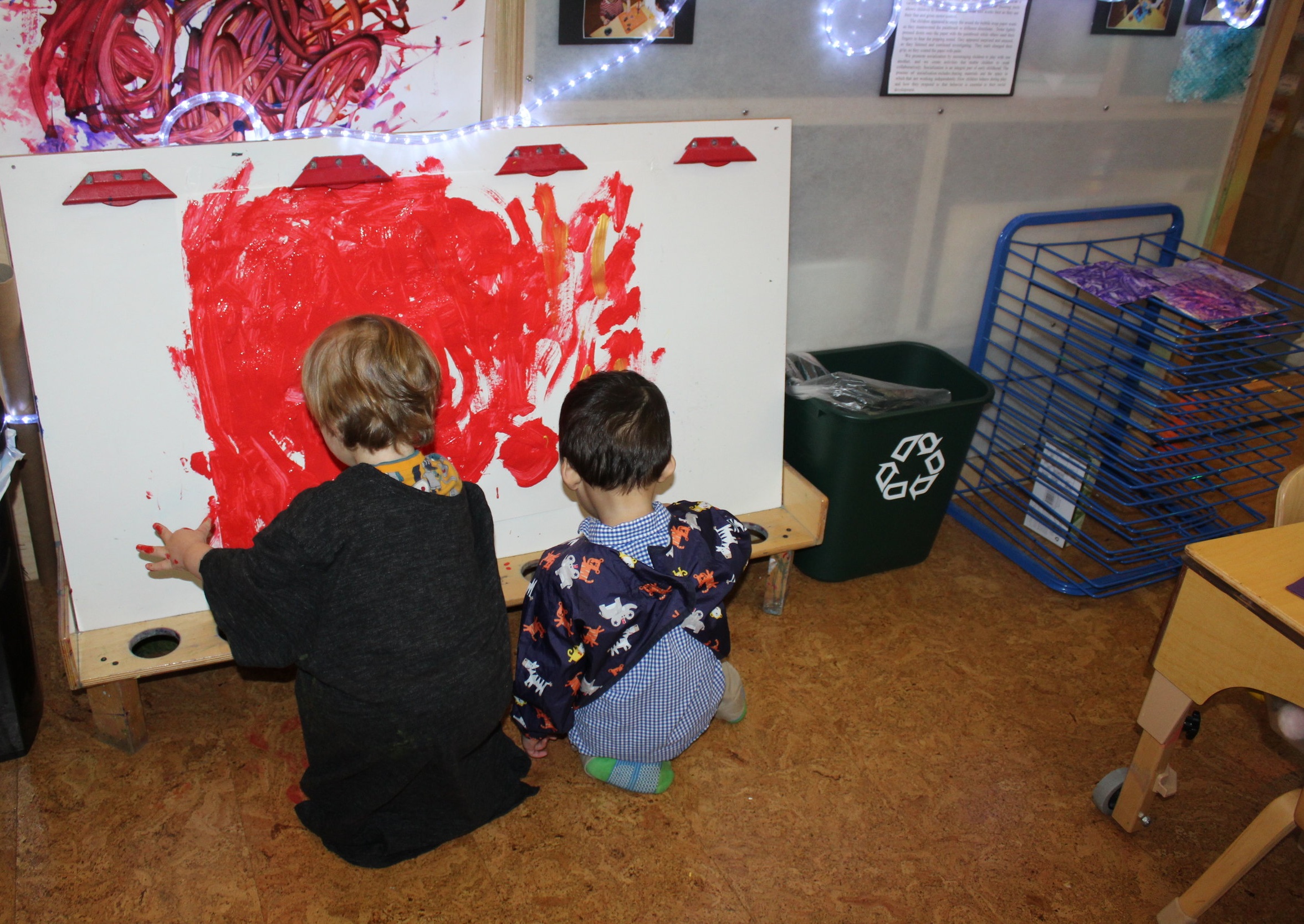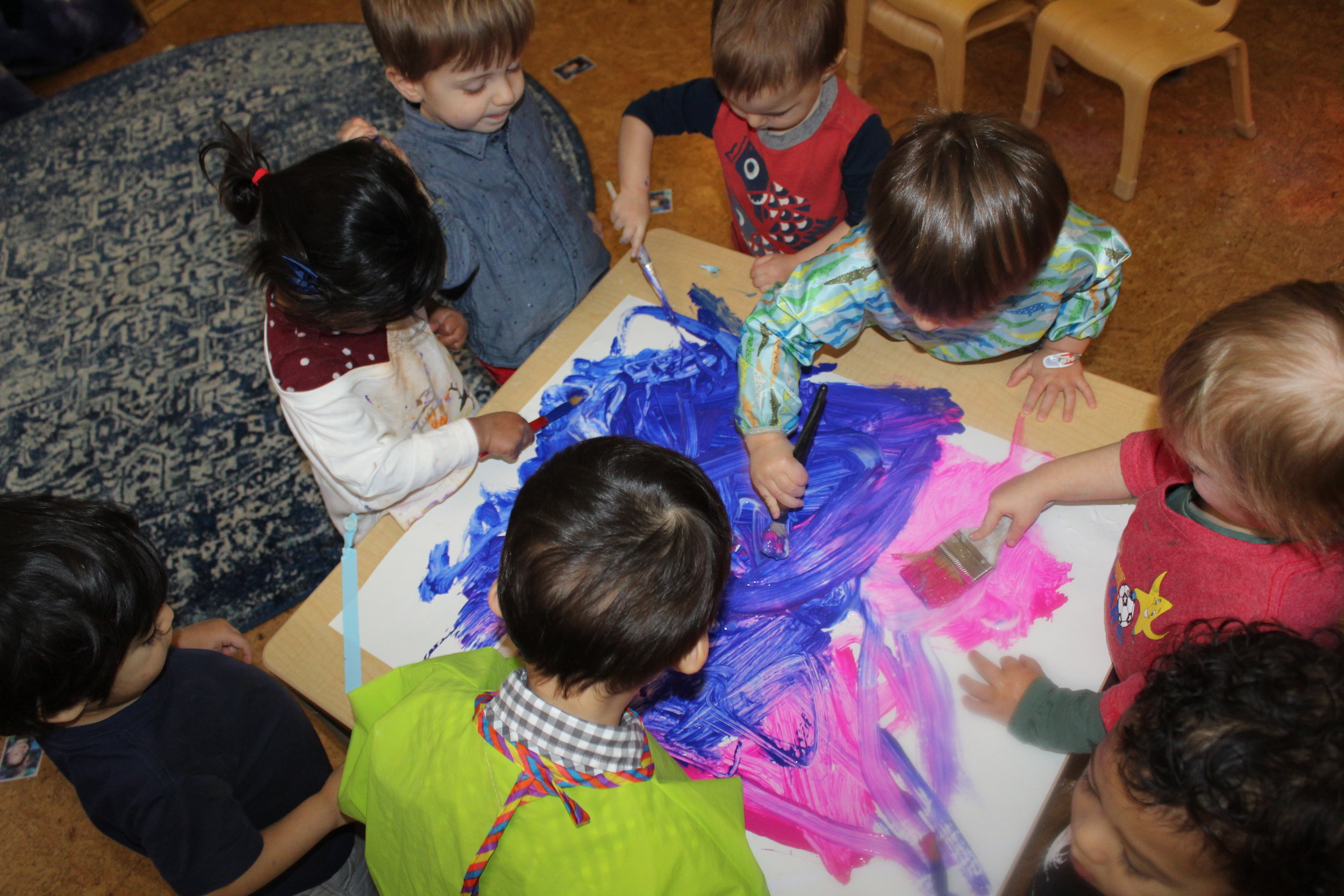Every morning we welcome all the children as they arrive. During circle time we sing our good morning song, and as we go around, each child articulates their name. The children are learning and expressing more words as they develop their language skills. Each interaction contributes to their language development; whether they are singing songs, responding to questions or engaging in activities.
Spanish, Cooking with Diane, and Music, are our weekly specialists. The afternoon children have Karate and Yoga. Each specialists promote a learning experience that contributes to their physical and cognitive development.
Spanish:

Cooking with Diane
The children tasted different fruits, Orange, Grapefruit and Pineapples.






Music


Yoga





Blocks

Leo: “Look, a bulldozer!”

Teacher: “I like the way you connected the hollow blocks! What is your structure about?”
Leo: “Its a train, Sandra!”

We measure the children's height with unit blocks. On that day, Leo spontaneously selected the pillar blocks and aligned them. When asked, he said, “I'm measuring myself!”




Children Wooden Unit Blocks have been the standard for the classroom because of their proportions, (length is twice the width, width is twice thickness). They facilitate the learning of spatial concepts and simple geometry. Building with blocks promotes skills that involve the whole child. Each child moves their muscles differently to build and create structures.
Some of the children have been discovering how different blocks feel in their hands, and about space and shapes. They develop ideas and interests of their own as they select the blocks he/she wants to use. They investigate the Hollow Blocks and Unit Blocks (pillar, double unit blocks, and half units) as they explore. Nathaniel did not express what his structure was about but continued putting them into precise adjustment. Size and shape are essential features that help children to decide how they want to build their structure. Blocks are stimulating and rewarding. They contribute to the children's creativity and imagination as they explore.


Nathaniel noticed that there were no more pillar blocks; therefore, he selected two double units and several half units. As he continued aligning them, he used his finger to push any blocks that were out of alignment.

Art


A painting experience stimulates children's brain, as they freely express themselves and develop their creativity. As he painted at the easel, Charles managed to spread the red hue across the paper. Everything he saw white, Charles covered it with paint. Cooper observed and added some gold color to the painting. Painting is not only about color and texture, but it also soothes the children as they work.

Rohan and Cooper had the opportunity to work collaboratively on the bubble wrap painting.

Process art allows children to explore and investigate color and texture. The children delved into the painting as they mixed tempera paint, glue, and salt. Some squeezed glue, whereas other painted or did both.







Anything Can be a Paintbrush: They explored painting with feathers, cotton balls, thin brushes, and Q-tips.



Sometimes, revisiting an activity makes the process more exciting. The children placed purple strips in a parallel, horizontal or vertical formation on their paper. Each art piece is unique and creative.


Teacher: “Leo, I noticed that you are placing the purple strips close together. What are you making?
Leo: “Those are women sleeping in the night and the day. When they wake-up they had a smile.
Teacher: “Who else is in the picture?”
Leo: “Just woman!”




Fireworks Painting, using recycled bathroom tissue rolls


Manipulative:

Leo and Cooper cooperatively were playing, as they connected and disconnected the blocks.






Teacher: “Rohan, what are you building?”
Rohan: “A tower!”
Rohan, was focused as he explored and manipulated the Lego Blocks.
Cooper and Charles did their first self-portraits. The teacher asked, “Where your hair, eyes, mouth, and nose are?” They each pointed and recognized where their features were before they maneuvered the writing tool on their self-portrait pads.

Hair

Nose

Ear

Mouth

Hair

Nose

Ears

Mouth

Self-portraits are drawn once a month. We sit one-on-one with a mirror, paper, and a sharpie marker. The mirrors encourage children to look closely at the shapes of their facial features. They observe and explore their image. As they look at their features: eyes, nose, mouth, and hair, they notice that each location and shape is different. For example, the direction of their nose is different from their hair. The objective of self-portrait is to learn about self-awareness and to recognize themselves.
Children utilize a tool to draw the self-portrait. The continuous movement helps and builds fine motor skills and bilateral coordination skills as well. The tool promotes the use of the pincer grasp and naturally strengthens the small hand muscles. Providing opportunities, practice, stimulation, and encouragement to refine their fine muscles will help them when they begin to learn to write.

Circle Time




Each morning we sing songs and talk about the colors we are wearing. What color are you wearing today? They look at their clothing and match a color or a similar shade from the painting sticks. We also did some counting. The children try to guess what was inside the box. After revealing the items (feathers), we counted them in English and Spanish. The number (8) in written form was incorporated, this helps them associate the numeral with the number of objects. They will gradually form a mental image, as we teach, and demonstrate numbers.



We do different things to transition from one activity to another. For example, the children's first letter of their names is written and articulated. Then we ask the children to erase the letter that corresponds to their name.


